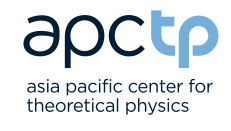Speaker
Description
The proposed new Electron-Ion collider poses a technical and intellectual challenge for the detector design to accommodate the long-term diverse physics goals envisaged by the program; one requires a 4𝝅 detector system capable of identifying and reconstructing the energy and momentum of final state particles with high precision. The EPIC collaboration has formed to design, build, and take data with Detector 1. India has been involved in high-energy physics experiments around the world including ALICE, and CMS experiments in LHC at CERN, and in the STAR experiment at Brookhaven National Laboratory, the USA among many others. A large community already doing intensive phenomenological studies, physics analysis, and simulations regarding QCD physics is interested in participating in EIC. India has been doing R&D on detector technologies like Resistive Plate Chambers (RPCs), Gas Electron Multipliers (GEMs), Thick GEMs and Micromegas, etc., for the last several years. Regarding EIC hardware activities, India is willing to participate in Particle Identification (PID), Tracking, and DAQ development. Several groups have shown interest in tracking detector development based on Micro Pattern Gaseous Detector (MPGD) technologies and Silicon Detector Technologies. Some groups are solely interested in participating in PID hardware activities. A broad overview of possible Indian participation in ePIC hardware activities along with related software activities will be presented in the talk.

